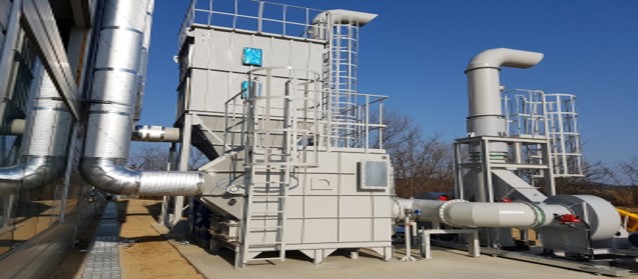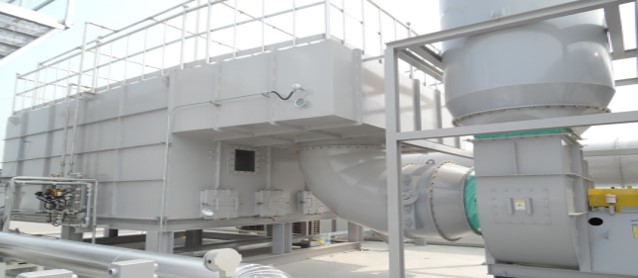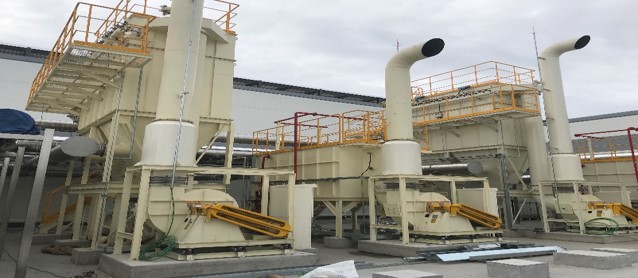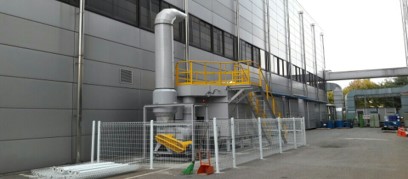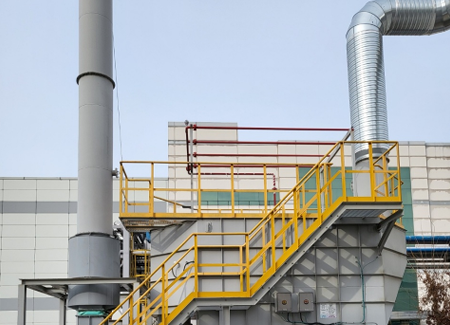
AC TOWER
The adsorption tower is an air pollution prevention facility that removes gaseous pollutants by adsorbing them onto adsorbents. The device absorbs contaminated gas and removes it by passing it through an adsorbent-filled adsorption tower, which is useful when pollutants are non-combustible or difficult to burn, and when the concentration of pollutants is low, and odors can be removed. As an adsorbent, there are activated carbon, zeolite, silica gel, alumina, etc., and activated carbon is most commonly used among them.
- It is most commonly used in workplaces where gaseous pollutants such as volatile organic compounds and odors are generated.
- It can be used in food factories, paint manufacturing, printing plants, plating plants, petrochemical plants, wastewater treatment plants, etc.
core design factor
The gas sucked into the adsorption tower is designed so that the passing flow rate of the activated carbon is about 0.3 to 0.5 m/sec on average, so that the gas stays in the activated carbon by 1.0 sec or more. If dust, moisture, corrosive substances, etc. are present in the gas, it is designed by removing them first in a separate pretreatment facility and then introducing them into the adsorption tower. When the temperature is high, contaminants adsorbed to activated carbon are desorbed. If the temperature of the gas is higher than 54°C, it should be cooled to 54°C or less with a heat exchanger. The proper adsorption temperature of activated carbon is 40°C or less.
Types and Applications of Adsorbents
Solvent recovery, odor removal, gas purification
drying of gases, air and liquids
oil removal, gas and solution drying
Separation of substances
decolorization of sugar
oil, pigment, oil and wax removal
refining of lubricants, fats, and wax
refining of gasoline and fat wax
removal of impurities in caustic soda solution
drying and purification of gases and removal of iron from caustic soda solutions
